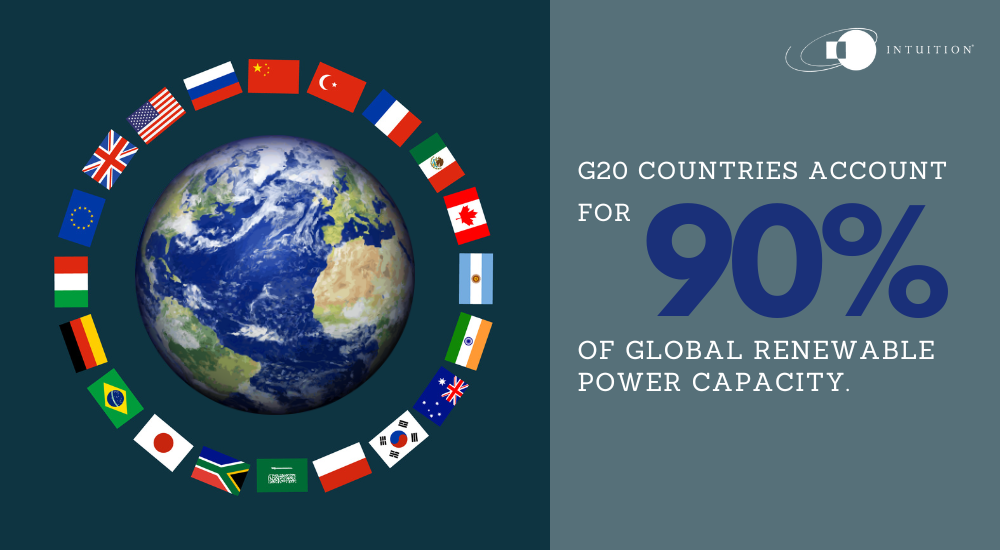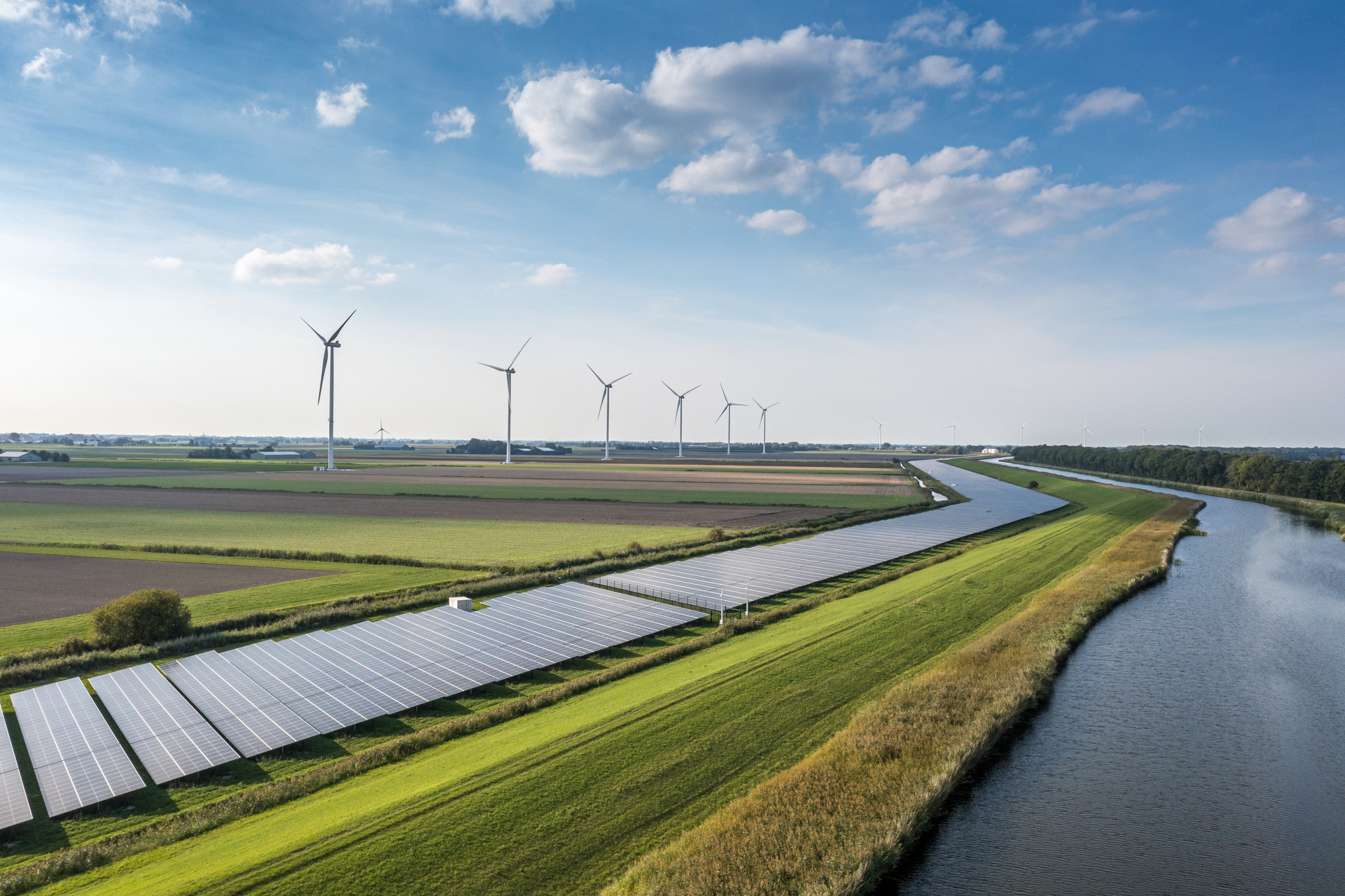Renewables growth strong but still off required pace
The world increased its global renewable energy capacity in 2023 by around 500 gigawatts (GW) to over 4,000 GW, according to the International Energy Agency (IEA). While this rate of growth in capacity (50% higher than in 2022) – the fastest in two decades – on the face of things appears impressive, the same agency warned that the increase is insufficient to achieve last year’s COP28 goal of tripling renewable power capacity by 2030.
Last year was the 22nd consecutive year of record-setting renewable capacity additions globally, with increases in Europe, the US, and Brazil reaching all-time highs. But China was far and away the strongest performer, commissioning as much solar PV in 2023 as the entire world did in 2022 (globally, solar PV alone accounted for three-quarters of renewable capacity additions worldwide). Meanwhile, China’s wind capacity additions rose by 66% year-on-year.

Challenges to tripling renewables by 2030
According to the IEA, under existing policies and market conditions global renewable capacity is forecast to reach 7,300 GW by 2028 – a growth trajectory that would see global capacity increase to 2.5 times its 2022 level by 2030. The IEA believes the world can close the gap to reach over 11,000 GW by 2030, which would be in line in with the agency’s Net Zero Emissions by 2050 (NZE) Scenario.
While the challenges in meeting the tripling target vary significantly by region and country, the IEA believes it can be achieved if governments address a number of shortcomings, such as:
- Policy uncertainties, including delayed policy responses to the new macroeconomic environment
- Insufficient investment in grid infrastructure that prevents faster expansion of renewables
- Cumbersome administrative barriers and permitting procedures
- Insufficient financing in emerging and developing economies
- Social acceptance issues
At present, G20 countries account for almost 90% of global renewable power capacity. While growth in these countries is on track to meet the targeted tripling of capacity by 2030, many emerging and developing economies continue to lack renewable targets and/or supportive policies – a key obstacle to the IEA target being met.
Renewables growth to pass significant milestones
Nonetheless, the IEA expects a number of significant milestones to be achieved in the coming years.
- In 2025, renewables are set to surpass coal to become the largest source of electricity generation.
- Wind and solar PV are projected to surpass nuclear electricity generation in 2025 and 2026, respectively.
- In 2028, renewable energy sources should account for over 42% of global electricity generation, with the share of wind and solar PV doubling to 25%.
China, which the IEA describes as the world’s renewables powerhouse, is projected to account for almost 60% of global renewable capacity additions between now and 2028. Deployment of onshore wind and solar PV in China is accelerating, despite the phasing out of national subsidies in 2020 and 2021. The country is expected to reach its national 2030 target for wind and solar PV installations this year, some six years ahead of schedule.

Policy supportive of renewables growth
Supportive policy environments and the improving economic attractiveness of solar PV and onshore wind are the primary drivers of the renewables acceleration. As residential and commercial consumers seek to reduce their energy bills in jurisdictions such as Europe and Brazil, growth in rooftop solar PV is expected to outpace large-scale plants. In the US, the Inflation Reduction Act includes measures that not only aim to manage inflation but also offer a package of tax incentives and benefits designed to support the country in tackling climate change. Meanwhile, India has pushed through the auction schedule for utility-scale onshore wind and solar PV, which, helped by the improved financial health of distribution companies, is expected to deliver fresh impetus.
The rapid growth in solar energy is propelled by the remarkable decrease in prices for solar PV modules, which fell by almost 50% year-on-year in 2023, coupled with a threefold increase in manufacturing capacity compared to 2021 levels. Yet despite unprecedented policy-driven manufacturing expansion in the US and India, China is expected to maintain its 80 to 95% share of global supply chains.
China a significant competitive threat
The US, India, and EU face a choice between developing their own domestic PV manufacturing (increasing the security of supply and bringing economic benefits to local communities) and sourcing cheaper imports from China. Intense price competition from China has contributed to a spate of bankruptcies across the European solar power supply chain, according to SolarPower Europe, a trade advocacy group for the industry.
Regardless, the future of renewables seems assured, with an estimated 96% of newly installed, utility-scale solar PV and onshore wind capacity having lower generation costs than new coal and natural gas plants.
Intuition Know-How has a number of tutorials relevant to the content of this article:
- Sustainability & Sustainable Development
- Net Zero
- Climate Change – Physical Risks
- Climate Change – Transition Risks
- Greenwashing
- Clean Energy (Coming Soon)
- Commodities – Renewables
- Commodities – Electricity
- Sustainable Development Goals (SDGs) – An Introduction
- Sustainable Development Goals (SDGs) – Impact on the Financial Sector


